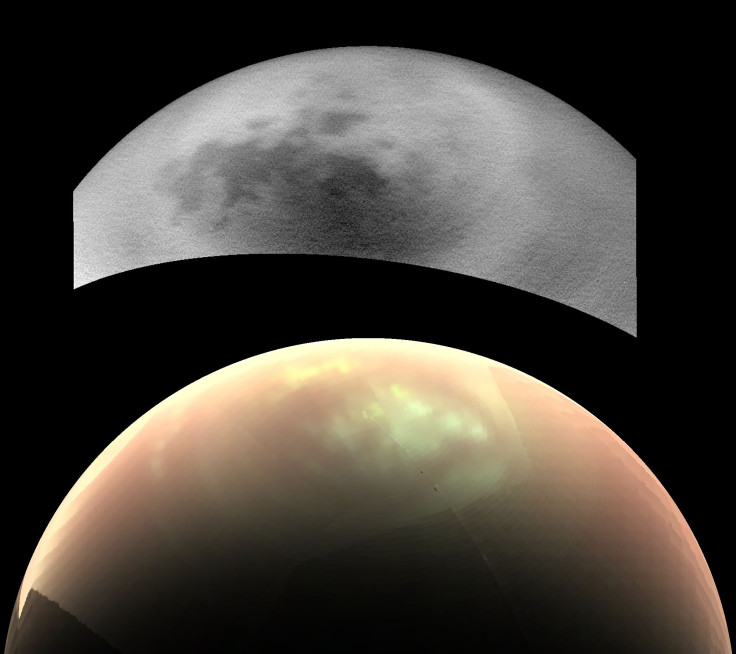Where Are Titan’s Clouds? Cassini Images Reveal Curious Conundrum

Images of Saturn’s largest moon, Titan, captured by NASA’s Cassini spacecraft have revealed a baffling mystery — one that relates to the moon’s cloud cover.
The images of Titan’s northern latitudes, taken during Cassini’s flyby on June 7, were captured using the Imaging Science Subsystem (ISS) instrument — which consists of a wide-angle and a narrow-angle digital camera that is mostly sensitive to the visible wavelengths of light — and the Visual and Infrared Mapping Spectrometer (VIMS) — which can detect infrared wavelengths.
For some inexplicable reason, the image taken by the ISS shows only a few small, isolated clouds. The VIMS observations, on the other hand, reveal widespread cloud cover — something that matches atmospheric models that predict clouds becoming more common at high northern latitudes as summer approaches the hemisphere.
On Titan, heat is circulated through a nitrogen- and methane-rich atmosphere via a pole-to-pole cycle originating from the warmer pole — which was the South Pole when Cassini arrived at Saturn in 2004. Since Titan’s equinox of 2009, this has reversed, and, as a result, warm gases are now upwelling at the North Pole and cold gases have been seen subsiding at the southern end.
“The observations were made over the same time period, so differences in illumination geometry or changes in the clouds themselves are unlikely to be the cause for the apparent discrepancy,” NASA said in a statement.
Although the exact cause behind this discrepancy is not yet clear, NASA has put forward a theory — Titan’s hazy atmosphere may be much easier to see through at the longer infrared wavelengths that VIMS is sensitive to than at the shorter wavelength used by ISS.
“High, thin cirrus clouds that are optically thicker than the atmospheric haze at longer wavelengths, but optically thinner than the haze at the shorter wavelength of the ISS observations, could be detected by VIMS and simultaneously lost in the haze to ISS — similar to trying to see a thin cloud layer on a hazy day on Earth,” NASA explained in the statement. “This phenomenon has not been seen again since July 2016, but Cassini has several more opportunities to observe Titan over the last months of the mission in 2017, and scientists will be watching to see if and how the weather changes.”
The Cassini spacecraft, locked in orbit around Saturn since 2004, is currently in the midst of performing ring-grazing maneuvers. Once these orbits are done, Cassini will begin its “grand finale,” during which it will pass just over 1,000 miles above the thick clouds that enshroud Saturn. This would then be followed by a fatal plunge through the planet’s atmosphere on Sept. 15 — a move that NASA said is needed to protect Saturn’s potentially habitable moons.
© Copyright IBTimes 2024. All rights reserved.






















